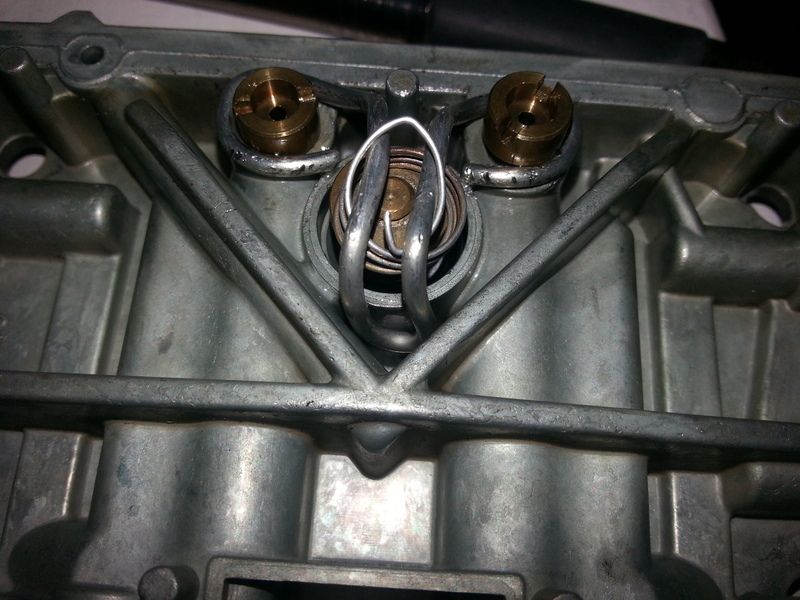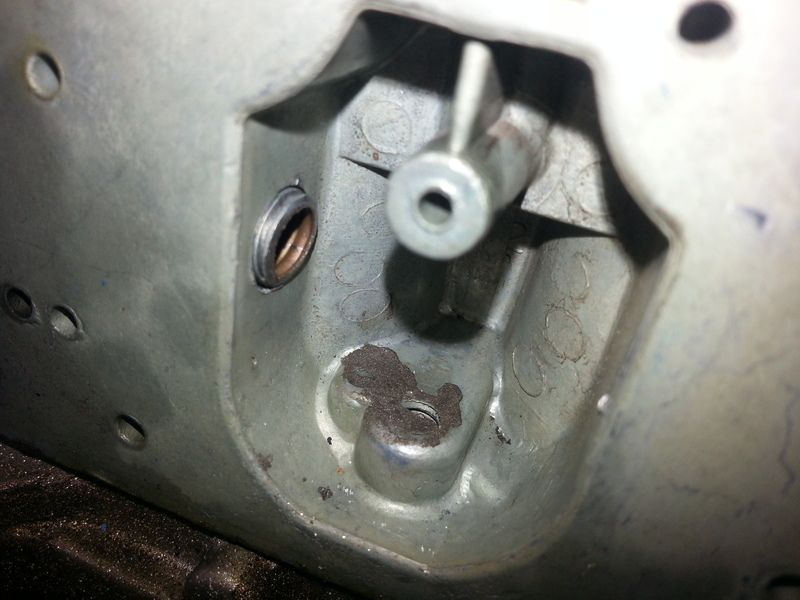I pulled this posting from the forum and was wondering how much extra power you're going to get with mods like this...
I don't want to swap the engine, I really dig the slant 6!
The interesting fact is; the slant six can have multiple "personalities," not unlike a person who's schizophrenic and can display different and variable behaviors at different times. We have all seen movies that feature a person, (usually a woman, for some unknown reason,) who exhibits dramatically-altered personalities at random times... so much so that they seem to be totally-different people.
The slant six was mandated, by the "front office" at Chrysler, to power the new Valiant for 1960. The powers-that-be, (at the time,) specified in no uncertain terms, that it WAS going to be powered by an inline six, and that new overhead-valve engine would be as short as physically possible from the fan to the flywheel, and be "short," top-to-bottom (for a low hood-line.) . This meant "thinking outside the box" on engine design, so the design-engineers laid the engine on its side (30-degrees,) and moved the water pump from the end of the engine to its side... making it both lower and shorter, front-to-rear. Additionally, the design engineers specified that the bores of this new engine be only 3.4", in yet another effort to make it as short (front-to-rear) as possible.
This design strategy had several results; some good... some not-so-good.
It WAS short, for sure, and that made it possible to fit it into the engine bay of the new Valiant with room to spare... exactly as the front office had asked for.
The 170 cubic-inch version was a great-performing "economy" engine, and had performance potential that was exceptional, with HyperPak 170 slant six Valiants embarrasssing G.M. and Ford so badly at the "compact" race at Daytona Beach (N.A.S.C.A.R.,) that the officials who ran the racing program CANCELED any further "compact" races for the following year...
So far, so good...
But, when the need for an engine that would pull around the bulk and weight of the full-sized Mopars of the day resulted in a ONE-INCH stroke increase of the 170 (resulting in a 225 cubic-inch motor,) nothing was done to the cylinder-head to improve its ability to "breathe," and that situation has never changed, to this day.
Naturally-aspirated, the 225 motor is a full 1/3 larger than the 170 with the same breathing apparatus (ports and valve sizes.)
That just doesn't work for what we like to call "high-performance."
To give you a telling example of the breathing situation of the 225 motor, it is interesting to compare that engine with the 302 (5-liter) Chevy V8 Z-28.
Each motor has approximately 38 cubic inches per cylinder.
Slant 6 valves are 1.62" on the intake; the biggest valves that fit without "heroic measures" are 1.75". STOCK Chevy valves on the intake are 2.02".
The exhaust side is a little better, but not much. The stock slant six exhaust-valves are 1.36" with an increase to an aftermarket 1.5" with the STOCK Chevy exhaust valve diameter being 1.6".
You can see the problem... The best-flowing 225 reworked heads come in at around 220cfm on the intake side, with the Chevys at over 280cfm... on the same-size cylinders.
There is just NO WAY to get the kind of per-cubic-inch performance out of a naturally-aspirated slant six that will give you much over 300 horsepower, if that... No amount of scienced-out intake-system, headers, cam design, rpm's, nor high compression will result in stellar performance, because it will always be defeated by that OEM, "170" cylinder head.
Now, 300 horsepower will result in an A Body such as 805 Mopar Kid's '68 Dart going 14-flat at almost 100 mph. That sort of acceleration is, arguably, a few car-lengths faster than, say a bone-stock 340 Duster.
But, it takes a full-race engine with a rough idle and some poor gas mileage to get that 14-flat.
Of course, you can build a car with more friendly road manners and better gas mileage that will run 15-flat.
But, if a 14-flat isn't fast enough for you, there is always, forced-induction.
Slant sixes are especially well-suited for supercharging/turbocharging, and I imagine Nitrous, although I don't know anything about the laughing gas...
What makes them especially well-suited for forced-induction is the layout of the block structure; because they were originally designed to be made of aluminum, the main-bearing webs, the outside of the block (walls) and the deck surfaces, are especially thick. The aluminum plans got shelved after some 55,000 copies, (due to production problems,) and they reverted back to all cast-iron construction. But, very little was changed, so the thicker material specs remained, making for an engine that is more like a Diesel than a gasoline engine...
In the real world, that means a slant six is one sturdy little engine, with a short, forged steel crankshaft, and main bearings the size of a Hemi's.
I have a friend who has experimented with high boost-levels on his turbocharged slant six... so far he has utilized 37 pounds without engine failure. Don't try that with your V-8....
But, there have been two engines (both FABO MEMBERS,) that have videos that show their cars running the quarter-mile at over 120mph, which requires about 500+ horsepower...
The turbo engines, as I see it, can be built two ways, with two different levels of performance: You can put together a low-boost (under 15 pounds,) turbo motor, with stock everything (pistons, rods, valves, cam etc.) and enjoy a pump-gas motor that will move your A Body in the low 13's at a little over 100mph, OR you can build it (for a LOT more money,) with forged pistons and rods, and run it on race gas and play with the "big boys" at speeds of 120mph+ and quarter-mile e.t.s of 11-flat and sometimes better.
You pays your money and, you takes your choice.
But, in EACH CASE, you get to KEEP your slant six!!! No engine-swapping needed!
The Jeckyll/Hyde facet of this high-horsepower motor lies in its cam selection; the best running turbo slants idle like a stock motor at about 600 rpm, and have loads of mid-range torque. They are all done by 5,500 rpm, which, since the torque and horsepower figures always cross on a performance-graph at 5,250 rpm, means that these engines make over 500 pounds-feet of torque at about 5,000 rpm... That indicares a mild motor with excellent road manners, but with terrifying acceleration... a "split-personality.":twisted: LOL!
Turbo- (or, supercharging,) is neither cheap, nor easy.... but, it will provide results that you can't get anywhere else with a slant six! It's all about moving air through THAT HEAD!!!!






















